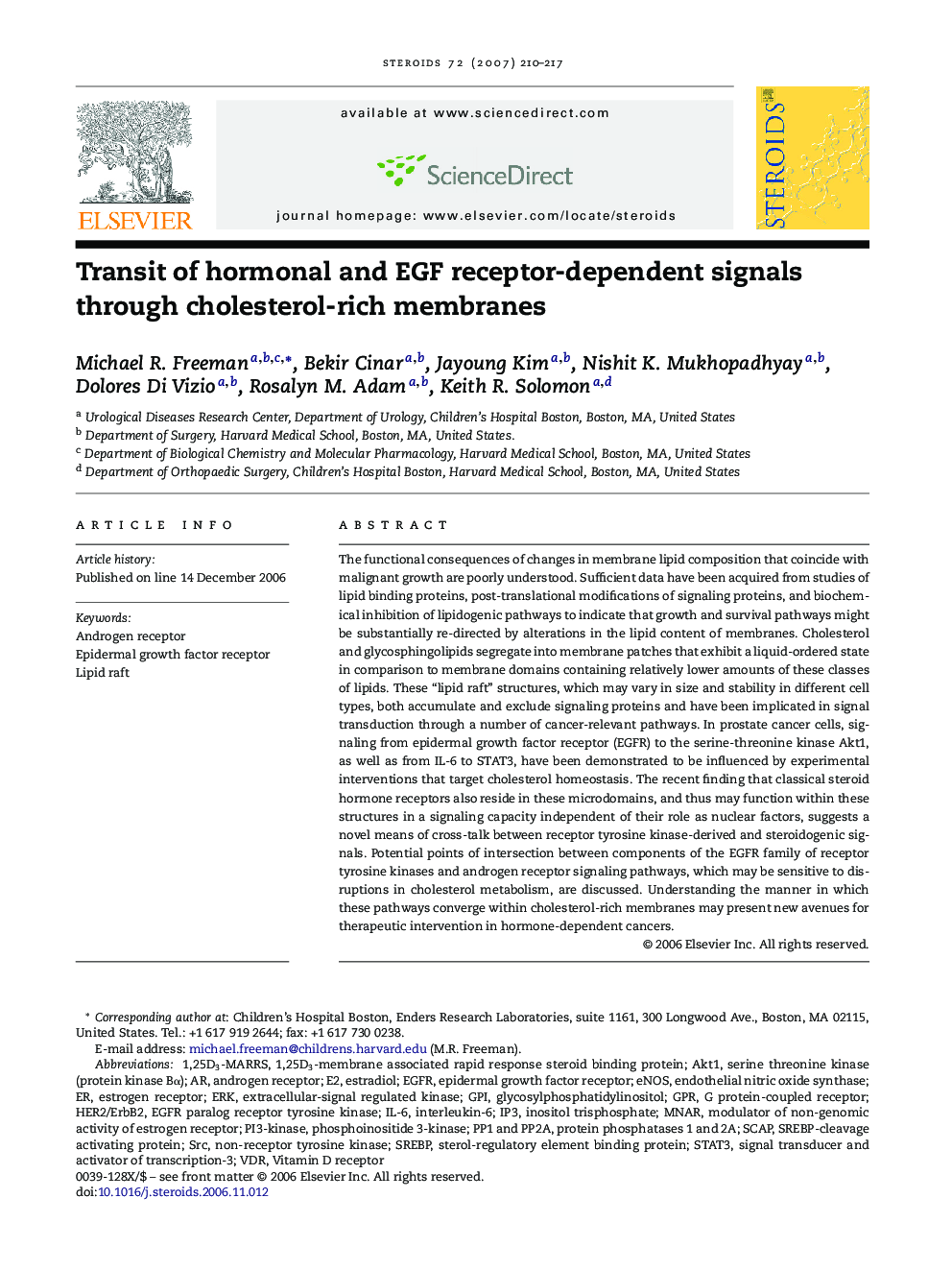| Article ID | Journal | Published Year | Pages | File Type |
|---|---|---|---|---|
| 2028844 | Steroids | 2007 | 8 Pages |
The functional consequences of changes in membrane lipid composition that coincide with malignant growth are poorly understood. Sufficient data have been acquired from studies of lipid binding proteins, post-translational modifications of signaling proteins, and biochemical inhibition of lipidogenic pathways to indicate that growth and survival pathways might be substantially re-directed by alterations in the lipid content of membranes. Cholesterol and glycosphingolipids segregate into membrane patches that exhibit a liquid-ordered state in comparison to membrane domains containing relatively lower amounts of these classes of lipids. These “lipid raft” structures, which may vary in size and stability in different cell types, both accumulate and exclude signaling proteins and have been implicated in signal transduction through a number of cancer-relevant pathways. In prostate cancer cells, signaling from epidermal growth factor receptor (EGFR) to the serine-threonine kinase Akt1, as well as from IL-6 to STAT3, have been demonstrated to be influenced by experimental interventions that target cholesterol homeostasis. The recent finding that classical steroid hormone receptors also reside in these microdomains, and thus may function within these structures in a signaling capacity independent of their role as nuclear factors, suggests a novel means of cross-talk between receptor tyrosine kinase-derived and steroidogenic signals. Potential points of intersection between components of the EGFR family of receptor tyrosine kinases and androgen receptor signaling pathways, which may be sensitive to disruptions in cholesterol metabolism, are discussed. Understanding the manner in which these pathways converge within cholesterol-rich membranes may present new avenues for therapeutic intervention in hormone-dependent cancers.
